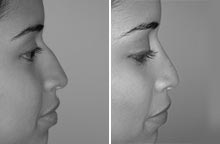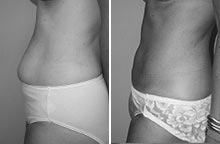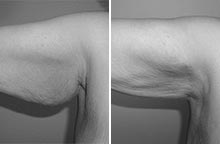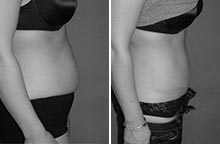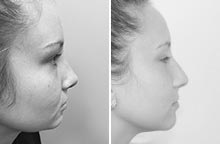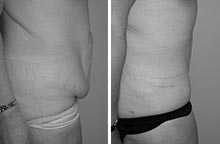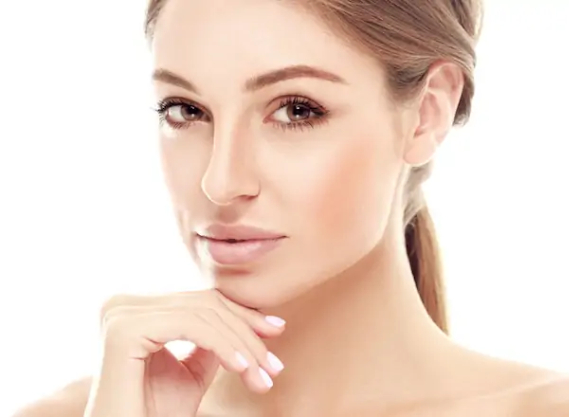Your nose is one of the main features of your face that impacts your overall appearance. Small adjustments to it can significantly alter your entire face. If you are not happy with the current state of your nose, rhinoplasty is a type of plastic surgery that can accomplish several cosmetic goals.
We encourage you to call our office today and schedule your consultation with Dr. David Abramson to learn more about what a rhinoplasty can fix for you.
10 Things a Rhinoplasty Can Fix
There are many things that a rhinoplasty can fix. The primary concerns you wish to address with the procedure will determine whether an open or closed rhinoplasty is best. An open nasal surgery uses an incision on the outside of the nose, while a closed rhinoplasty uses incisions inside your nose. Dr. Abramson will perform a thorough evaluation to identify the ideal option for your situation. Regardless of the rhinoplasty you choose, there are several issues that this surgery can fix, which we will look at below.
- Nasal Asymmetry
A rhinoplasty can help correct differences in size and shape between the two sides of the nose to achieve a more balanced appearance.
- Nasal Hump
Also called a dorsal hump, rhinoplasty and septoplasty help to reduce the size of a hump and create a smoother nasal profile.
- Nasal Tip
A rhinoplasty can help reshape the tip of the nose, including those that are bulbous, drooping, or tipped up.
- Deviated Septum
The central bone and cartilage that separate the two sides of the nose can sometimes be deviated from one side or the other. This impedes breathing and increases the risk of chronic sinus infections. A septoplasty can help alleviate this obstruction by opening the airways.
- Post-Traumatic Deformities
Nasal deformities to the bone and cartilage can happen after injury or trauma to the face. Rhinoplasty can help correct the appearance of these issues and improve breathing and function.
- Cleft Lip and Palate Nasal Deformities
Individuals born with a cleft lift and palate also incur certain deformities. The original deformity is typically corrected at birth, but the nasal area may be repaired after the individual stops growing. This surgery helps improve both the function and appearance of a patient’s nose.
- Width
Rhinoplasty can either increase or reduce the width of a patient’s nose to improve proportion and symmetry with their face.
- Revision
A second rhinoplasty may be needed to revise the poor results of another surgery. In this case, Dr. Abramson can review the mistakes from your prior surgeon and create a plan to address them.
- Saddle Deformity
When the nasal bridge is collapsed or has a scooped-out appearance, a rhinoplasty can help reconstruct the bone and create a more refined and straighter nose.
- Length
Like addressing width, rhinoplasty can help shorten or lengthen the nose to achieve better facial proportions. Lengthening can be done using cartilage graphs from the ear or ribs.
What to Expect During Recovery
Recovery varies from person to person and depends on the type of procedure, including whether the surgeon used an open or closed approach. However, there are some common stages that most people can expect.
During the initial week after surgery, you typically see swelling and bruising, accompanied by mild to moderate pain and discomfort. The discomfort is generally well managed with prescription pain medications.
The nose might be packed with gauze, and a splint is typically used to protect and support the nasal area. You will be advised to rest and avoid strenuous activities. In addition, it helps to keep your head elevated while awake and asleep to reduce swelling and encourage good drainage.
The swelling and bruising begin to subside in the first one to two weeks. Dr. Abramson will likely allow you to return to non-strenuous activities, including school and work. However, the rate at which you heal is dependent on your overall health and genetics.
Learn More About What a Rhinoplasty Can Fix During Your Consultation
Even small changes in the shape or size of your nose can immensely change your appearance. A rhinoplasty can correct several conditions, including width and length of the nose, traumatic injury, crooked bones, deviated septum, poor breathing, and a nasal hump.
We encourage you to call our office today and schedule your consultation with Dr. Abramson who will determine whether rhinoplasty is a practical solution to fix your cosmetic or functional concerns.
